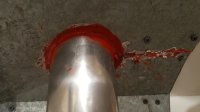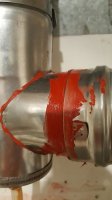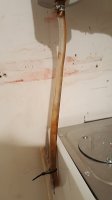WorldPeace
Member
I recently had my 10 year old tankless water heater replaced with a similar model by a professional plumber.
The plumber didn’t replace every part though. Actually, he used many of the previoius parts and I was wondering if it was acceptable. They did replace the 2 new vent adapters at the top of the unit (that came with the unit) and added new stainless steel vents until it reached the nearby ceiling. However, that is all that was replaced.
They didn't replace any parts of the vent past initial ceiling wall. Parts of the vent that went through a small section of open space before going through the roof and the outside terminal were the original parts. I asked if this was ok and they said that since the original vents were made from stainless steel, the exhaust vents and terminal didn’t need to be replaced. I was also wondering if they should have checked the outside flashing and other possible problems but nothing was done.
They also ended up using the same old pressure relief valves, the same copper tubing and black pipe. And didn't test the incoming gas pressure, the exhuast CO2 content in order to adjust the internal fan. Etc.
I was wondering if this is normal or else I was scammed.
Thanks everyone for your help. I just pray i didn't get scammed. I don't want to go through another ordeal.
The plumber didn’t replace every part though. Actually, he used many of the previoius parts and I was wondering if it was acceptable. They did replace the 2 new vent adapters at the top of the unit (that came with the unit) and added new stainless steel vents until it reached the nearby ceiling. However, that is all that was replaced.
They didn't replace any parts of the vent past initial ceiling wall. Parts of the vent that went through a small section of open space before going through the roof and the outside terminal were the original parts. I asked if this was ok and they said that since the original vents were made from stainless steel, the exhaust vents and terminal didn’t need to be replaced. I was also wondering if they should have checked the outside flashing and other possible problems but nothing was done.
They also ended up using the same old pressure relief valves, the same copper tubing and black pipe. And didn't test the incoming gas pressure, the exhuast CO2 content in order to adjust the internal fan. Etc.
I was wondering if this is normal or else I was scammed.
Thanks everyone for your help. I just pray i didn't get scammed. I don't want to go through another ordeal.



